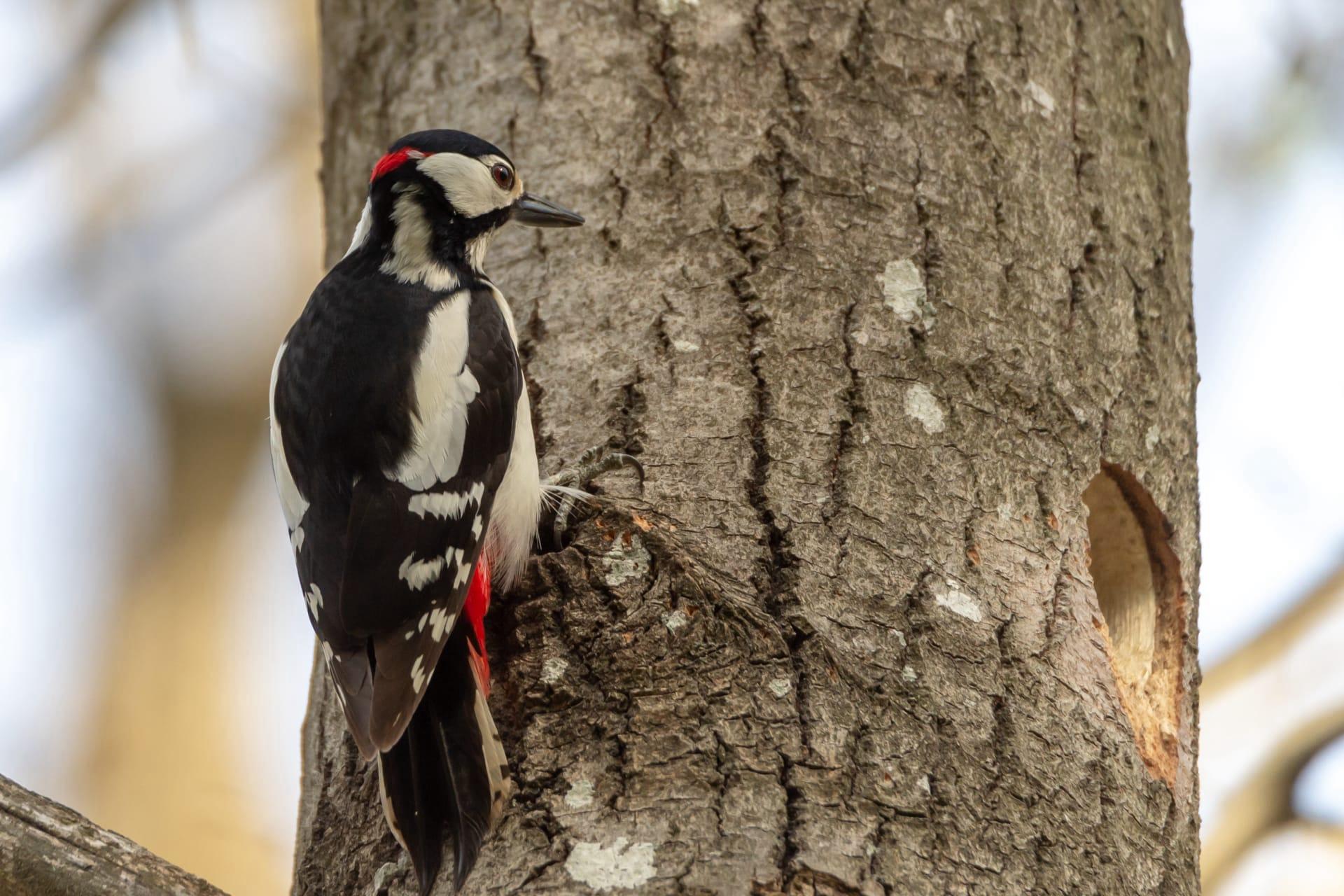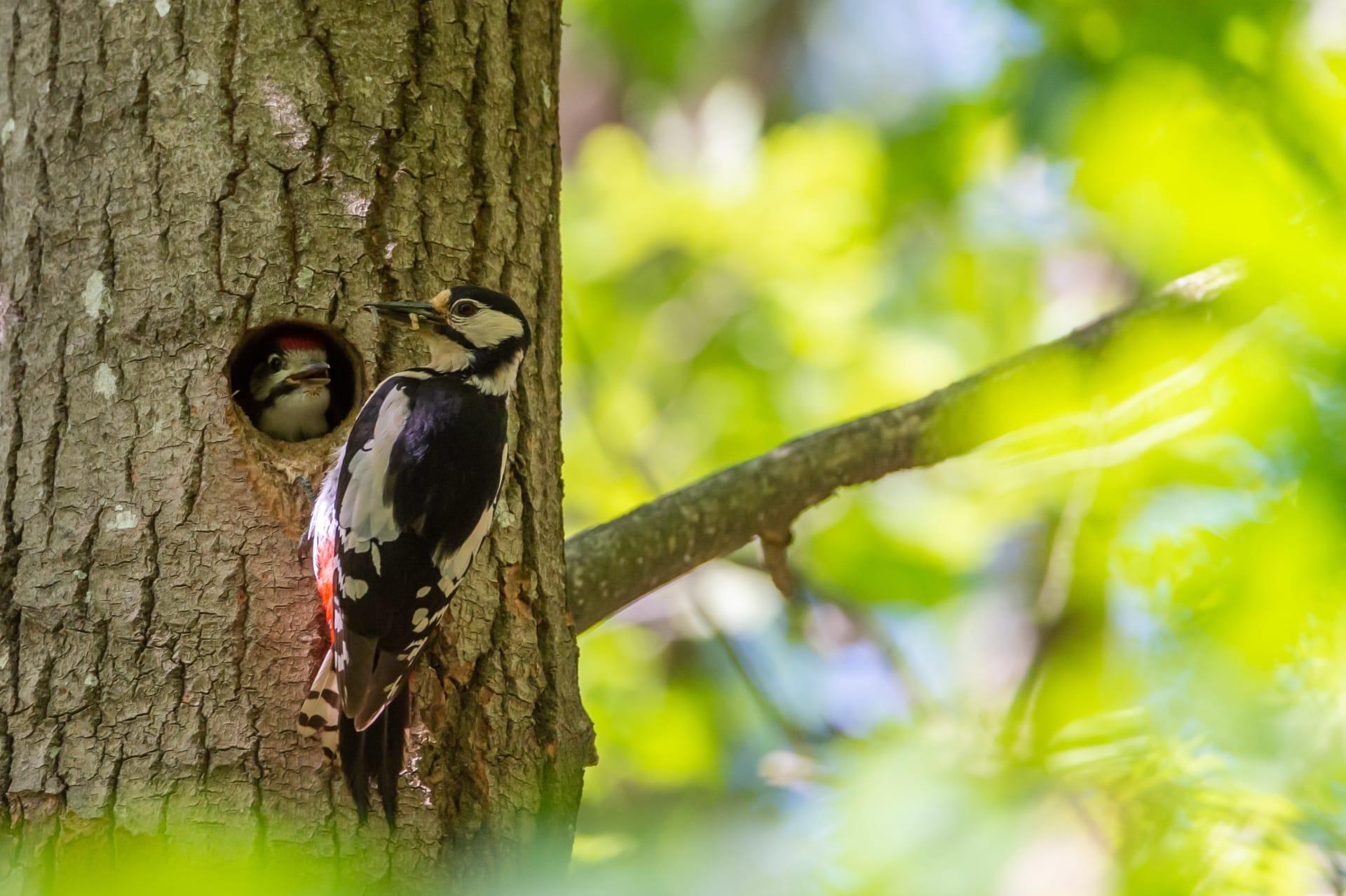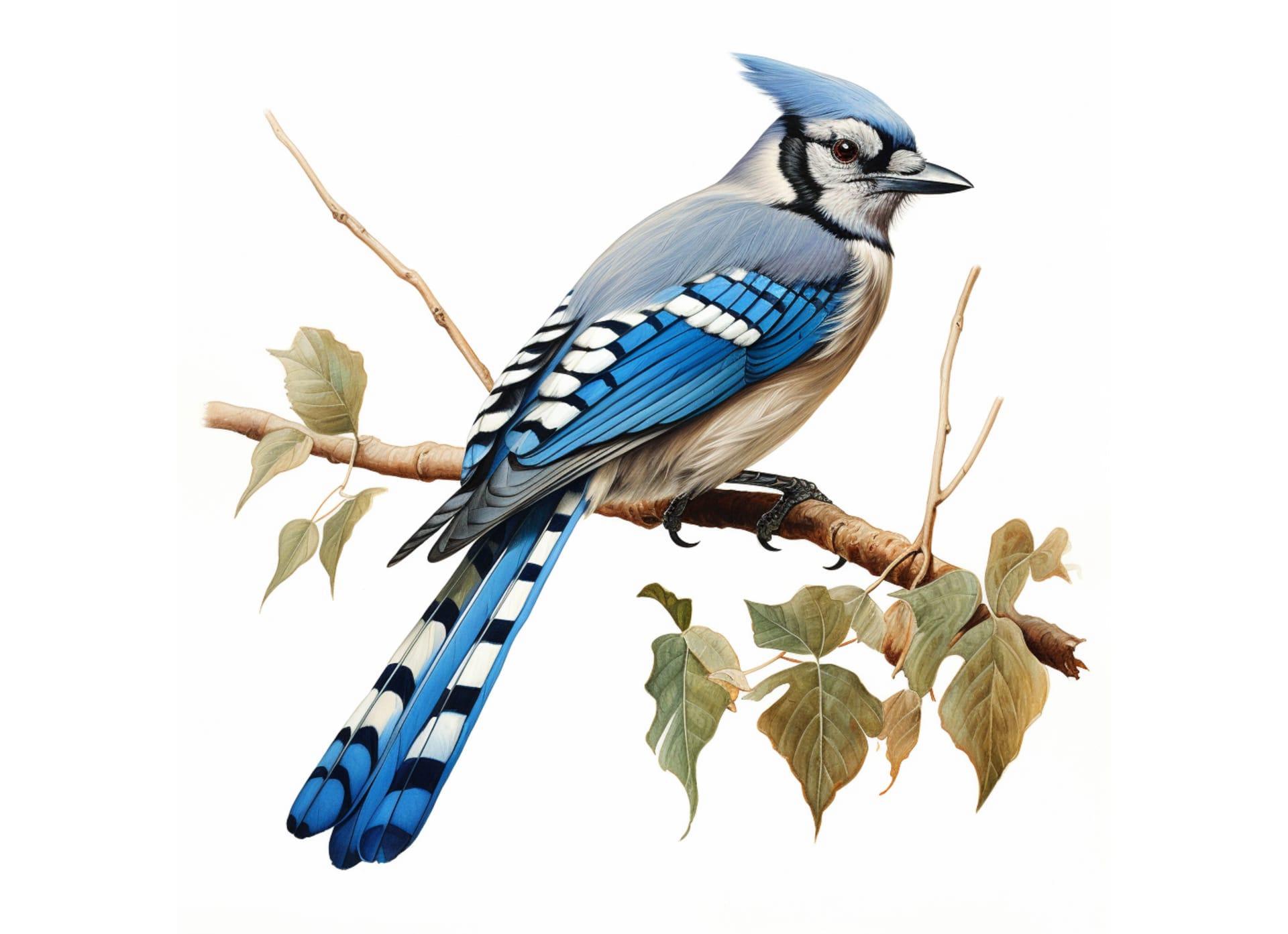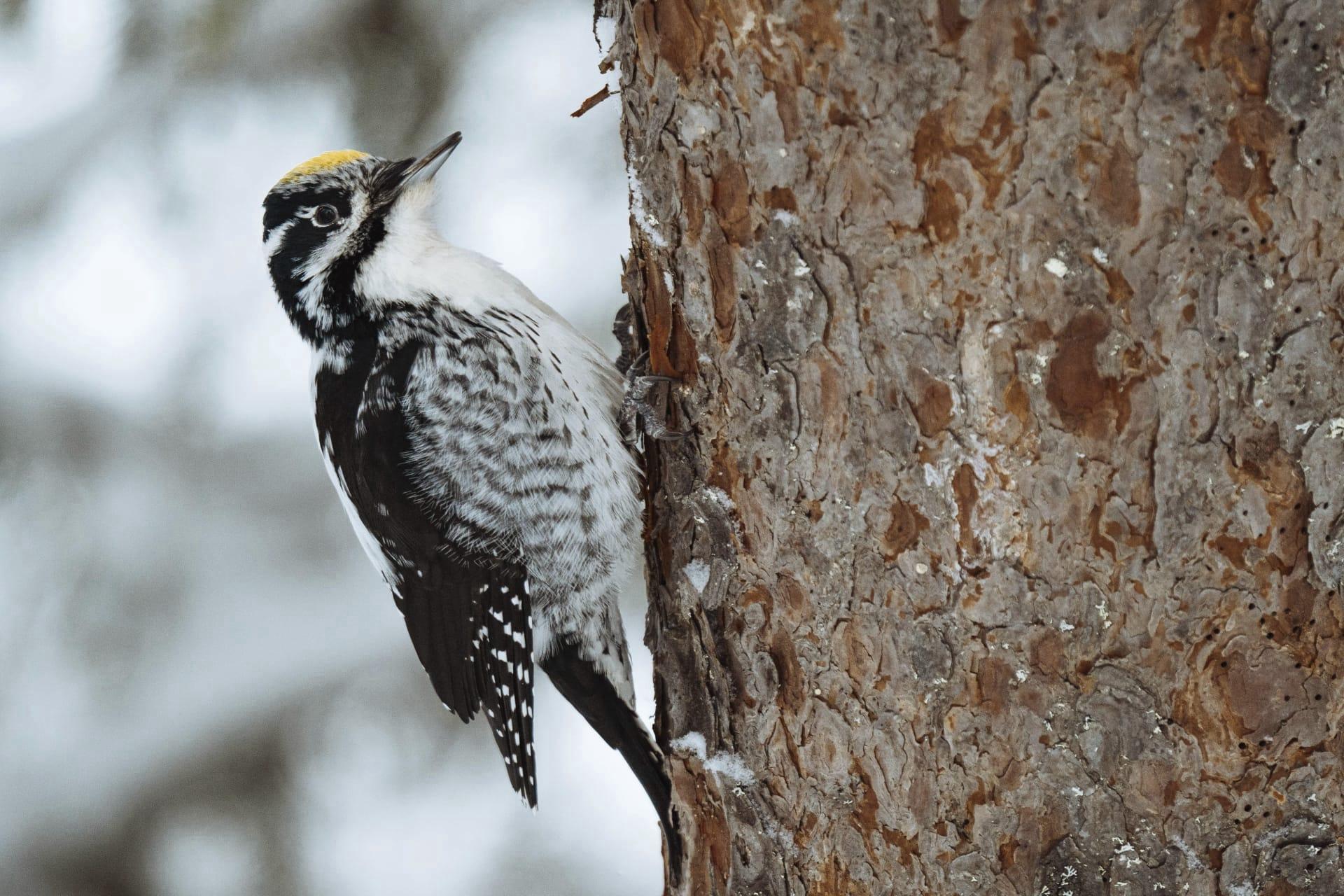Woodpecker Trivia
- Home /
- Trivia Question /
- Animal /
- Woodpecker Trivia
1
Question: How do woodpeckers avoid getting headaches when they peck at trees?
Answer: Woodpeckers are natural marvels at avoiding headaches despite pecking at speeds of up to 20 times per second! Their skulls have evolved to feature a shock-absorbent structure. The bird's beak is incredibly strong, yet slightly elastic, which reduces the impact force. Moreover, a woodpecker's brain is tightly packed within its skull, minimizing jostling during pecking. Fascinatingly, the space between the brain and skull is minimal, and the orientation of the brain is such that the force of pecking is spread across a larger area, lessening the impact on any single part.
Question: What unique feature helps woodpeckers drill into trees without damaging their eyes?
Answer: Protecting their eyes while drilling into wood, woodpeckers have a unique adaptation - a nictitating membrane. This transparent third eyelid slides across their eyes with each peck, acting like safety goggles. It shields their eyes from flying debris and prevents them from getting dry. Remarkably, this membrane also helps to brace their eyes against the force of the pecking, maintaining the position of the eyeball and providing additional shock absorption.

2
Question: Do woodpeckers use their beaks to find insects inside trees?
Answer: Yes, woodpeckers use their beaks as a tool to find food. Their beaks are not only for drilling into wood but also for sensing vibrations inside the tree. When a woodpecker taps on a tree, it listens for the sound of hollow spaces where insects might be hiding. Their beaks are chisel-like, perfect for excavating wood to reach insects. Also, they have long, sticky tongues that can probe deep into the holes they make to extract their prey, such as beetles and larvae.
Question: Are woodpeckers responsible for harming trees and causing them to die?
Answer: Contrary to popular belief, woodpeckers usually don't harm healthy trees. They are more likely to peck at trees that are already sick or dying. In fact, their pecking can be beneficial as it helps control insect populations that might otherwise harm the tree. Also, the holes they create can become habitats for other species, like small birds and mammals. However, excessive pecking on a single tree, especially if it's not in good health, can potentially contribute to its decline.

3
Question: How do woodpeckers communicate with each other?
Answer: Woodpeckers communicate primarily through drumming, a rapid pecking on resonant objects like trees, metal surfaces, or even gutters. This drumming serves as a territorial signal and a mating call. Each woodpecker species has a unique drumming pattern, like a signature rhythm. It's fascinating that they choose surfaces that will produce the loudest sound, enhancing the reach of their communication. Along with drumming, they also use vocal calls, which vary from sharp 'pik' sounds to longer calls for different situations.
Question: Can woodpeckers move in any direction on a tree trunk?
Answer: Woodpeckers have a remarkable ability to move up, down, and sideways on tree trunks. This agility is due to their strong claws and stiff tail feathers, which provide support and balance. Their feet have two toes facing forward and two backward, a configuration called zygodactyl, ideal for gripping the bark. Additionally, their tail feathers are reinforced with strong, stiff spines, allowing them to lean back and hammer with force without losing balance.

4
Question: Do woodpeckers have a favorite type of tree they prefer to peck?
Answer: Woodpeckers do show preferences for certain types of trees, but this varies among species and is influenced by the tree's health and bark characteristics. For instance, some woodpeckers prefer softer wood for easier drilling, while others opt for harder wood to produce louder drumming sounds for communication. Dead or dying trees are often favored due to the presence of more insects and softer wood. The availability of food sources, like specific insect species, also plays a crucial role in their tree preference.
Question: How does the diet of a woodpecker change with seasons?
Answer: The diet of woodpeckers is quite adaptable and varies with seasons. In spring and summer, they primarily consume insects, providing high protein necessary for breeding and growing. Come fall, they shift to eating more plant material like fruits, nuts, and seeds. This change is because insects become less abundant as temperatures drop. In winter, woodpeckers may rely more on tree sap or stored food from caches they've created in tree crevices. This seasonal diet variation ensures they get a balanced nutrition year-round.

5
Question: How long do woodpeckers live, and what affects their lifespan?
Answer: The lifespan of a woodpecker can vary widely depending on species and environmental factors. On average, they can live between 4 to 11 years in the wild. Factors affecting their lifespan include availability of food, habitat quality, predation risks, and weather conditions. Interestingly, woodpeckers in urban areas may have shorter lifespans due to factors like window collisions and fewer natural food sources.
Question: Are woodpeckers solitary or social birds?
Answer: Most woodpecker species are solitary or live in pairs, especially during the breeding season. They are territorial and often defend their feeding and nesting areas vigorously. However, some species may form small groups or loosely associated flocks during non-breeding seasons, especially in areas with abundant food sources. Social interactions outside the breeding season are not very common, but when they occur, they provide fascinating insights into the less understood aspects of woodpecker behavior.